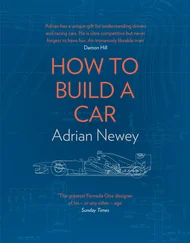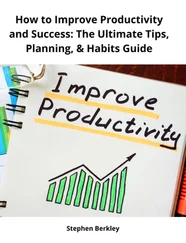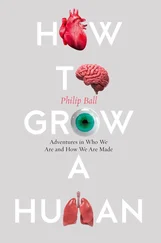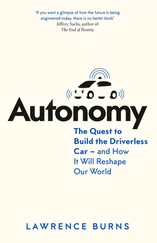Eyal, Nir - Hooked - How to Build Habit-Forming Products
Здесь есть возможность читать онлайн «Eyal, Nir - Hooked - How to Build Habit-Forming Products» весь текст электронной книги совершенно бесплатно (целиком полную версию без сокращений). В некоторых случаях можно слушать аудио, скачать через торрент в формате fb2 и присутствует краткое содержание. Год выпуска: 2014, Издательство: Nir Eyal, Жанр: Старинная литература, на английском языке. Описание произведения, (предисловие) а так же отзывы посетителей доступны на портале библиотеки ЛибКат.
- Название:Hooked: How to Build Habit-Forming Products
- Автор:
- Издательство:Nir Eyal
- Жанр:
- Год:2014
- ISBN:нет данных
- Рейтинг книги:5 / 5. Голосов: 1
-
Избранное:Добавить в избранное
- Отзывы:
-
Ваша оценка:
- 100
- 1
- 2
- 3
- 4
- 5
Hooked: How to Build Habit-Forming Products: краткое содержание, описание и аннотация
Предлагаем к чтению аннотацию, описание, краткое содержание или предисловие (зависит от того, что написал сам автор книги «Hooked: How to Build Habit-Forming Products»). Если вы не нашли необходимую информацию о книге — напишите в комментариях, мы постараемся отыскать её.
Hooked: How to Build Habit-Forming Products — читать онлайн бесплатно полную книгу (весь текст) целиком
Ниже представлен текст книги, разбитый по страницам. Система сохранения места последней прочитанной страницы, позволяет с удобством читать онлайн бесплатно книгу «Hooked: How to Build Habit-Forming Products», без необходимости каждый раз заново искать на чём Вы остановились. Поставьте закладку, и сможете в любой момент перейти на страницу, на которой закончили чтение.
Интервал:
Закладка:
The irrational manipulation of the way one sees the world is not limited to fictional animals in children’s stories. We humans do this as well.
Consider your reaction the first time you sipped a beer or tried spicy food. Was it tasty? Unlikely. Our bodies are designed to reject alcohol and capsaicin, the compound that creates the sensation of heat in spicy food. Our innate reaction to these acquired tastes is to reject them, and yet, we learn to like them through repeated exposure. We see others enjoying them, try a little more, and over time condition ourselves. To avoid the cognitive dissonance of not liking something in which others seem to take so much pleasure, we slowly change our perception of the thing we once did not enjoy.
***
Together, the three tendencies described above influence our future actions. The more effort we put into something, the more likely we are to value it. We are more likely to be consistent with our past behaviors. And finally, we change our preferences to avoid cognitive dissonance.
In sum, our tendencies lead to a mental process known as rationalization whereby we change our attitudes and beliefs to psychologically adapt. Rationalization helps us give reasons for our behaviors, even when those reasons might have been designed by others.
At a 2010 industry conference, Jesse Schell, a renowned game designer and professor at Carnegie Mellon University, articulated the peculiar train of thought some players exhibit online. [cv]Schell examined Mafia Wars, one of Zynga’s first breakout hits, which like FarmVille, attracted millions of players.
“There's definitely a lot of psychology here, because if someone had said 'Hey, we're going to make a text-based mafia game that's going to make over $100 million,' you'd say, 'I don't think you'll do that.' Right?” Schell said, channeling the critics of the day who originally dismissed the free, primarily text-based online game. But Zynga used its understanding of human psychology to build an irresistible product at the time.
Mafia Wars was among the first games to utilize information about players’ Facebook friends. “It’s not just a virtual world anymore. It’s your real friends.” Schell said. “And, you’re playing and it’s kind of cool ... but then hey, hey my real friend is better than me. How can I remedy that? Well, I can play a long time or I could just put $20 in — AHA! It’s even better if that $20 I put in validates something I know is true, that I am greater than my college roommate, Steve.”
Schell went on, “Combine that with the psychological idea … of rationalization, that anything you spend time on, you start to believe, ‘this must be worthwhile. Why? Because I’ve spent time on it!’ And therefore it must be worth me kicking in $20 because, look at the time I’ve spent on it. And now that I’ve kicked in $20, it must be valuable because only an idiot would kick in $20 if it wasn’t.”
Schell’s description of the quirky process of Mafia Wars rationalization helps demonstrate the strange logic of how we change our preferences. When players contemplate making a purchase, they acknowledge it is unwise to spend money on something that is not good. And yet, just like the fox that perceives the grapes as sour to reduce his frustration at not being able to reach them, players justify their purchases to help convince themselves of something they want to be true — namely, that they are not foolish. The only solution is to keep paying to keep playing.
The cognitive changes that lead to behavior change help power the shift in how we view the products and services we use. But how are habit-forming products designed for user investment? How can a product keep users committed to a service until it becomes a habit?
Bits of Work
In a standard feedback loop, the cue, action, and reward cycle can change our immediate behavior. For example, a radar-equipped sign is an effective way to make drivers immediately slow down by showing them their car’s speed relative to the posted speed limit.
But this pattern differs when it comes to how we form habits with products. The Hook Model is not just a framework for changing one-time behaviors, it is a design pattern to create unprompted engagement in order to connect the user’s problem to the designer’s solution. To form the associations needed to create unprompted user engagement, something more than the three-step feedback loop is required.
The last step of the Hook Model is the Investment Phase, the point at which users are asked to do a bit of work. Here, users are prompted to put something of value into the system, which increases the likelihood of them using the product and of successive passes through the hook cycle.
Unlike in the Action Phase of the Hook discussed in chapter three, investments are about the anticipation of longer-term rewards, not immediate gratification.
In Twitter for example, the investment comes in the form of following another user. There is no immediate reward for following someone, no stars or badges to affirm the action. Following is an investment in the service, which increases the likelihood of the user checking Twitter in the future.
Also in contrast to the Action Phase, the Investment Phase increases friction. This certainly breaks conventional thinking in the product design community that all user experiences should be as “easy” (and effortless) as possible. This approach still generally holds true, as does my advice in the Action Phase to make the intended actions as simple as possible. In the Investment Phase, however, asking users to do a bit of work comes after users have received variable rewards, not before. The timing of asking for user investment is critically important. By asking for the investment after the reward, the company has an opportunity to leverage a central trait of human behavior.
In an experiment conducted by Stanford researchers, two groups of people were asked to complete a task with the help of computers. [cvi]The study participants were initially asked to use their assigned computers to answer a series of questions. The computers provided to the first group were helpful when answering participants’ questions, while those provided to the second group were programmed to be unhelpful, offering unclear answers. After completing the task, participants then switched roles and the machines began asking the people for assistance with their questions.
The study found that the group given helpful computers performed almost twice as much work for their machines. The results showed that reciprocation is not just a characteristic expressed between people, but also a trait observed when humans interact with machines. Conceivably, we humans evolved the tendency to reciprocate kindness because it improved our species’ ability to survive. As it turns out, we invest in products and services for the same reasons we put effort into our relationships.
The big idea behind the Investment Phase is to leverage the user’s understanding that the service will get better with use (and personal investment). Like a good friendship, the more effort people put in, the more both parties benefit.
Storing Value
Unlike physical goods in the real world, the software that runs our technology products can adapt itself to our needs. To become better with use, habit-forming technology utilizes investments users make in the product to enhance the experience. The stored value users put into the product increases the likelihood they will use it again in the future and comes in a variety of forms.
Content
Every time users of Apple’s iTunes add a song to their collection, they are strengthening ties to the service. The songs on a playlist are an example of how content increases the value of a service. Neither Apple iTunes nor their users created the songs, and yet, the more content users add, the more valuable the music library becomes (figure 30).
Читать дальшеИнтервал:
Закладка:
Похожие книги на «Hooked: How to Build Habit-Forming Products»
Представляем Вашему вниманию похожие книги на «Hooked: How to Build Habit-Forming Products» списком для выбора. Мы отобрали схожую по названию и смыслу литературу в надежде предоставить читателям больше вариантов отыскать новые, интересные, ещё непрочитанные произведения.
Обсуждение, отзывы о книге «Hooked: How to Build Habit-Forming Products» и просто собственные мнения читателей. Оставьте ваши комментарии, напишите, что Вы думаете о произведении, его смысле или главных героях. Укажите что конкретно понравилось, а что нет, и почему Вы так считаете.












